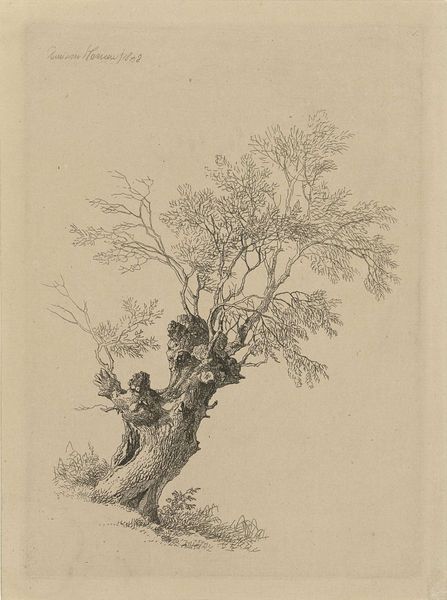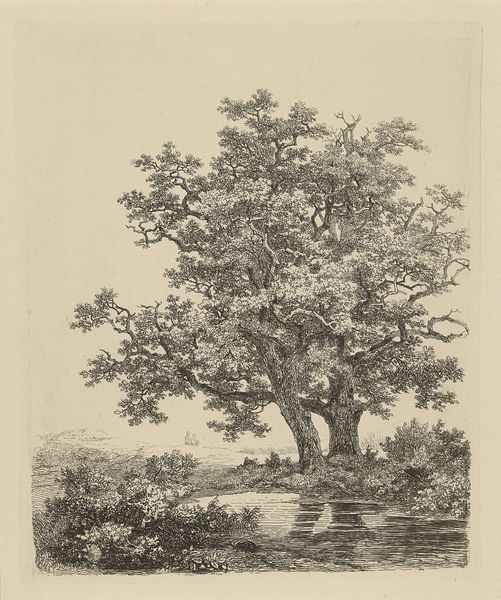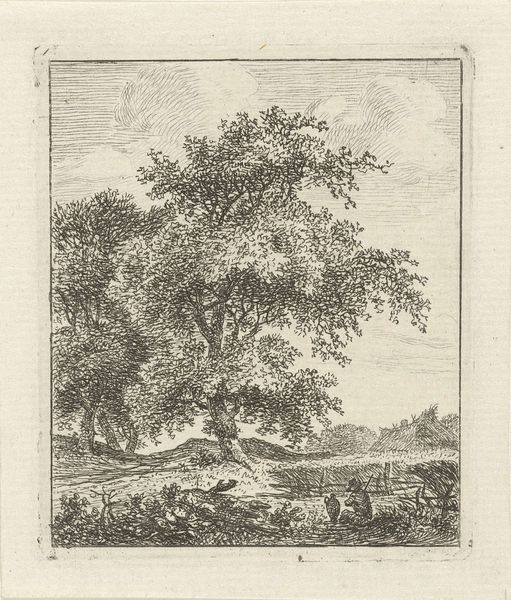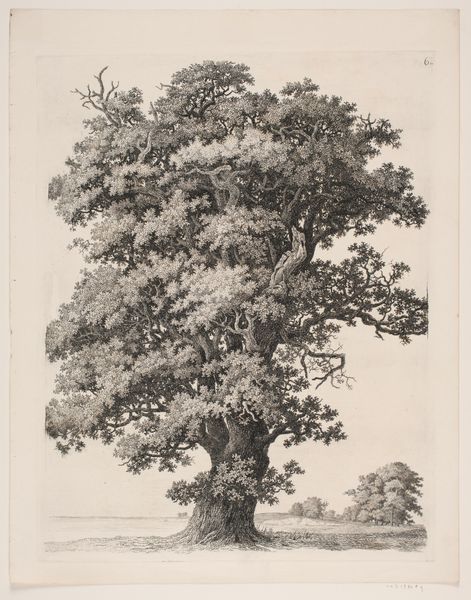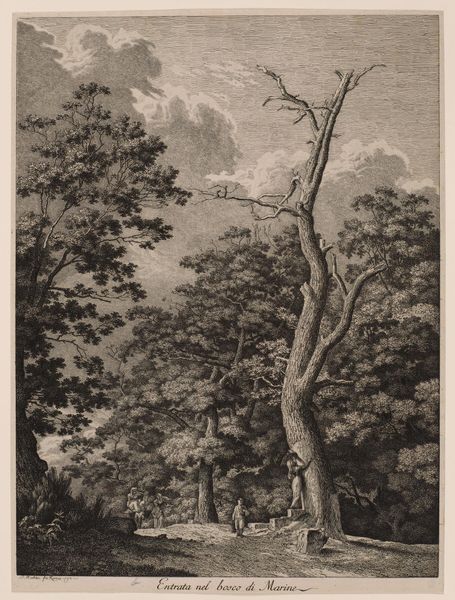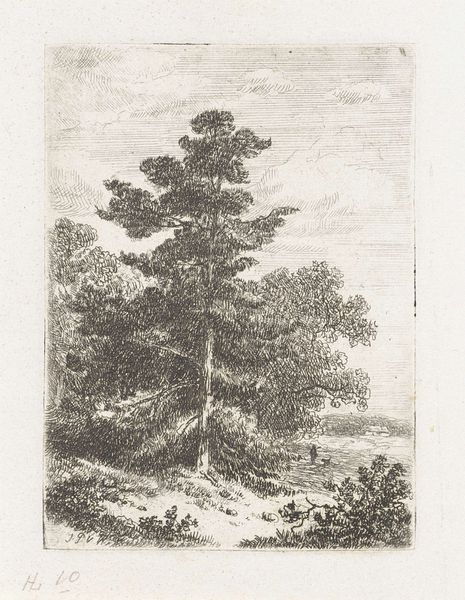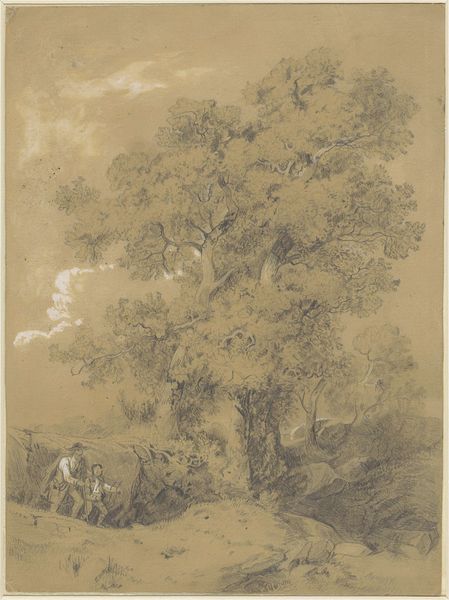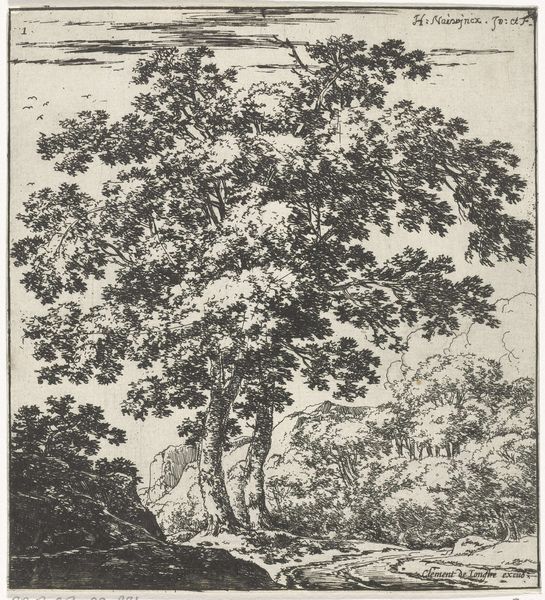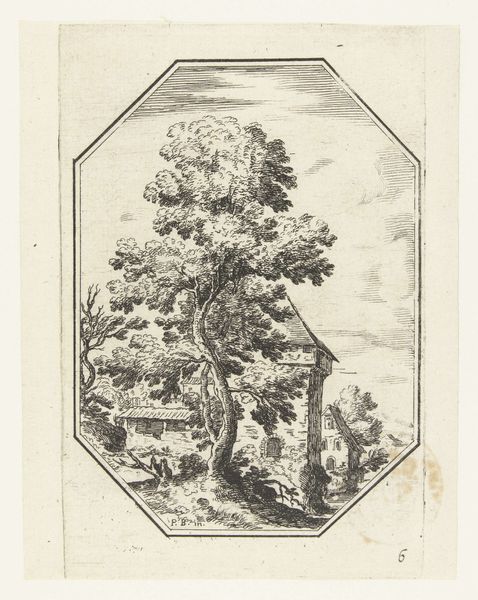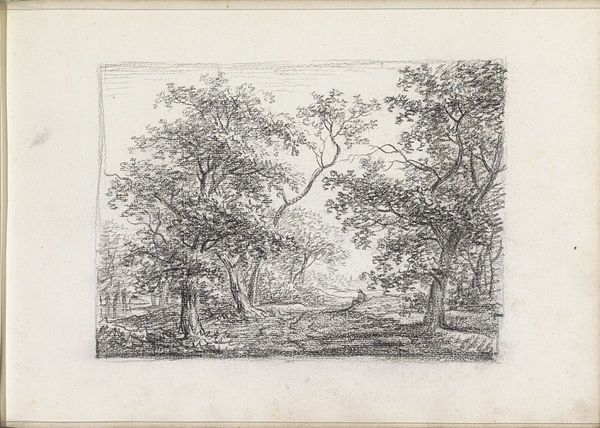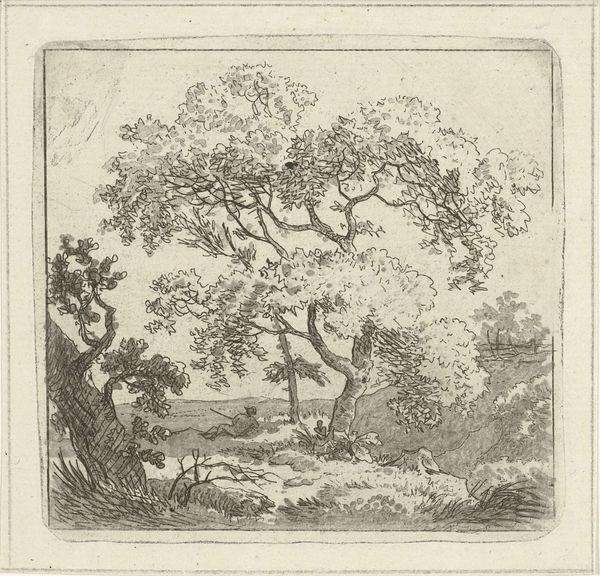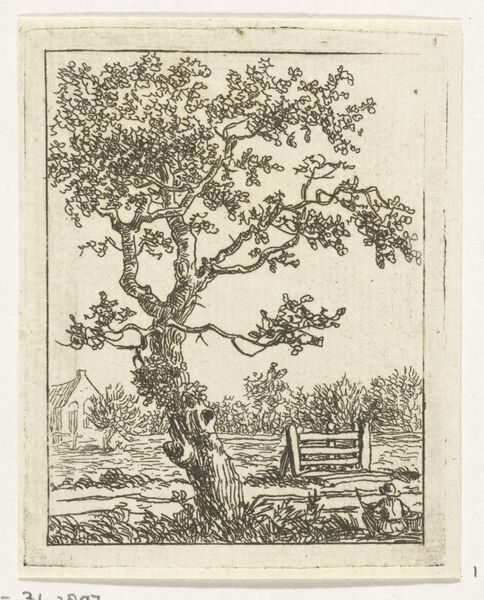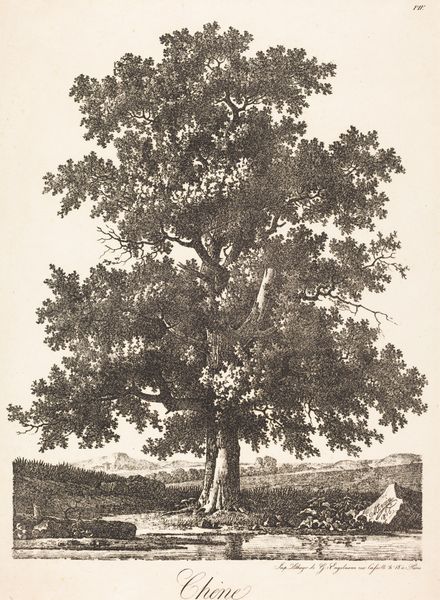
Dimensions: plate: 23.1 Ã 14.3 cm (9 1/8 Ã 5 5/8 in.) sheet: 32.1 Ã 22.9 cm (12 5/8 Ã 9 in.)
Copyright: CC0 1.0
Curator: This is Carl Wilhelm Kolbe's "Satyr Sitting under an Old Oak," a delicate etching from the late 18th or early 19th century. Editor: My first impression is one of quiet contemplation. The intricate details, especially in the tree's foliage, contrast with the stillness of the satyr. Curator: Kolbe's work often explores the relationship between humanity and nature, reflecting the social anxieties of his era regarding industrialization and its encroachment on the natural world. This piece perhaps suggests a longing for a simpler, more harmonious existence. Editor: And what does it mean to see this figure, the satyr, in this scene? I immediately think of the ways marginalized bodies, historically, have been closely associated with nature. Curator: Precisely. The satyr embodies a primal, untamed aspect of human nature, further emphasized by his immersion in the wilderness. Kolbe's choice of subject may critique societal norms, aligning the satyr's freedom with a yearning for liberation from rigid social structures. Editor: It's a powerful visual statement, prompting us to question the societal constraints we place on ourselves and on others. I’m struck by how relevant this piece remains today.
Comments
No comments
Be the first to comment and join the conversation on the ultimate creative platform.
